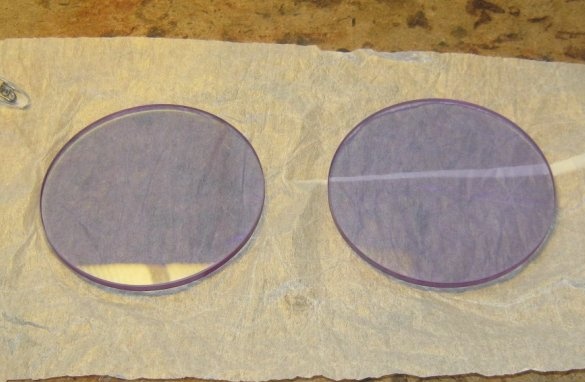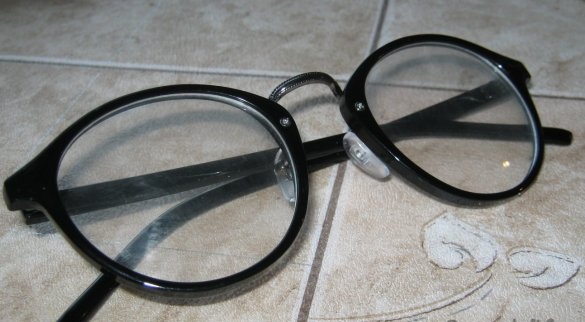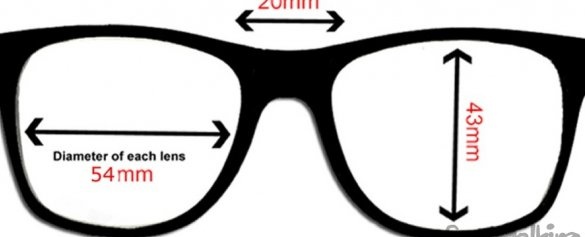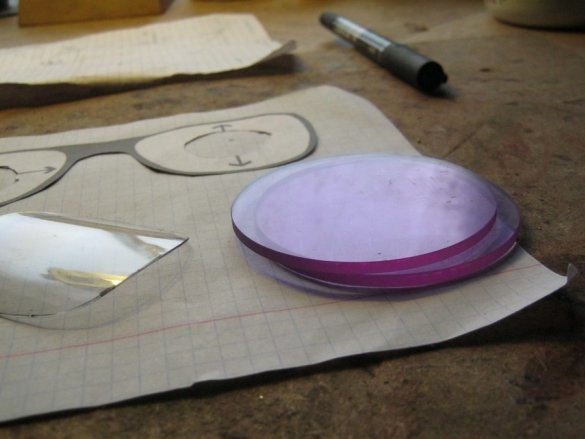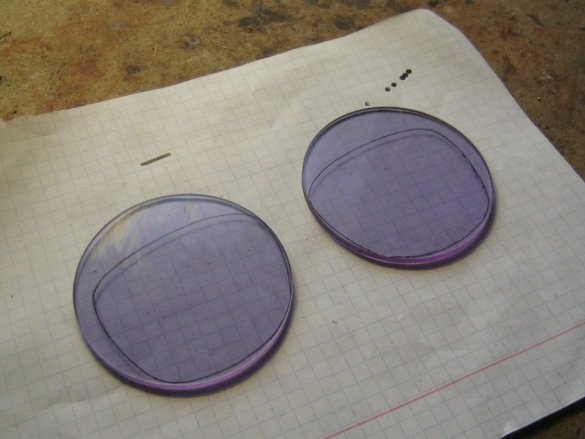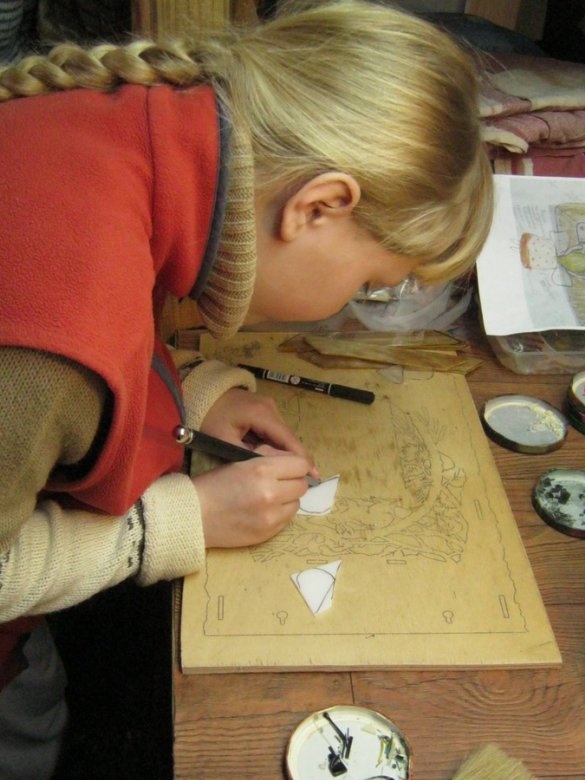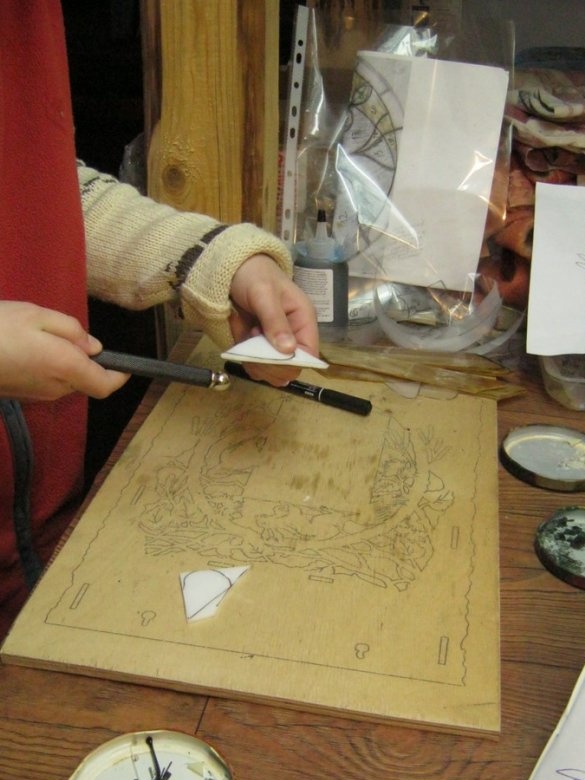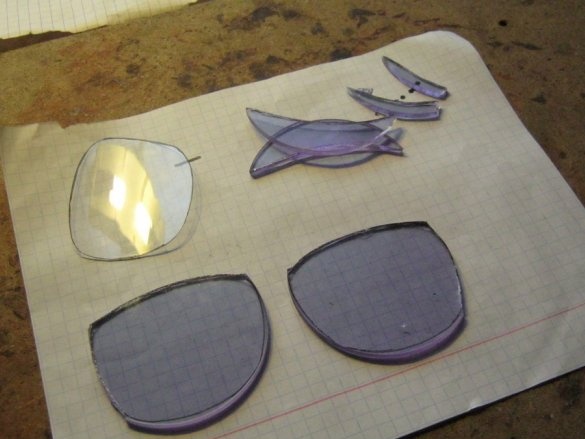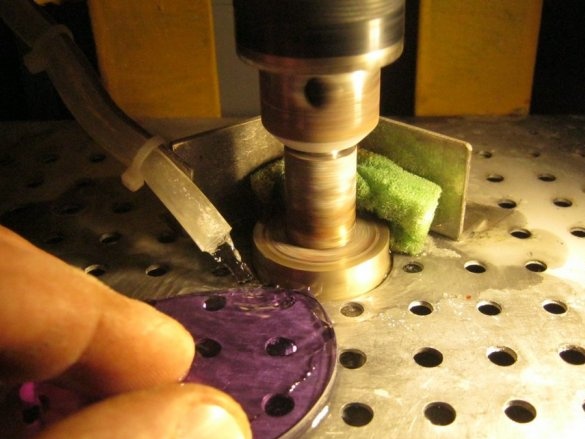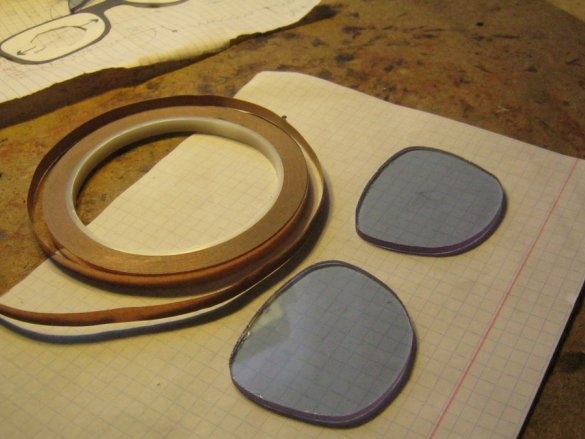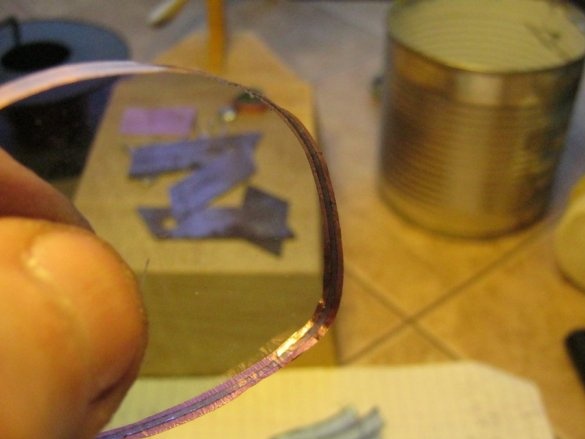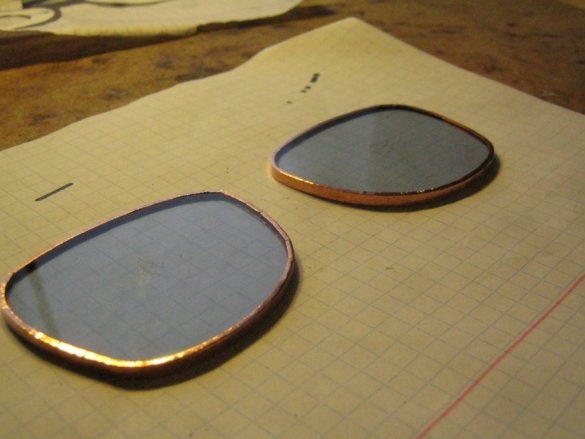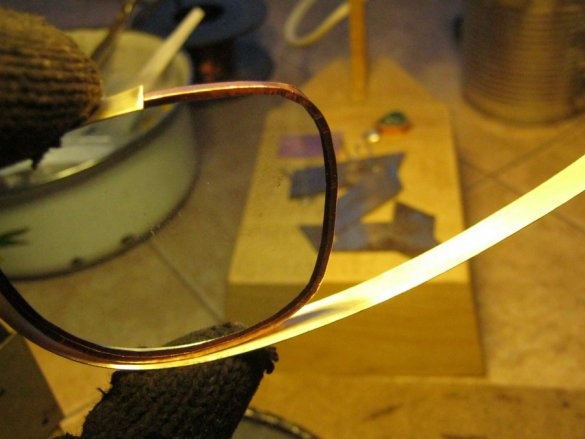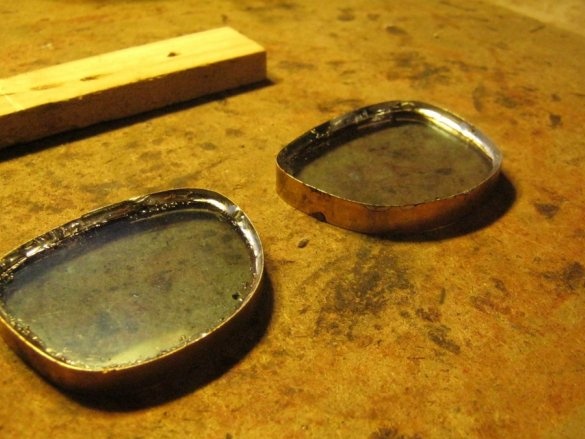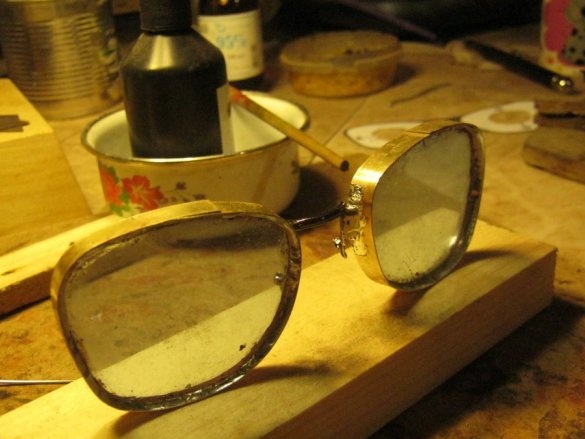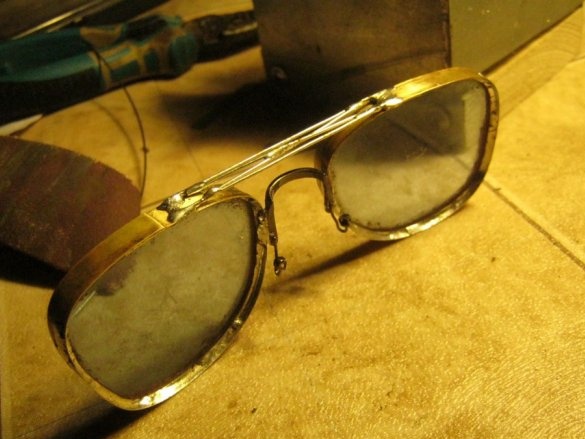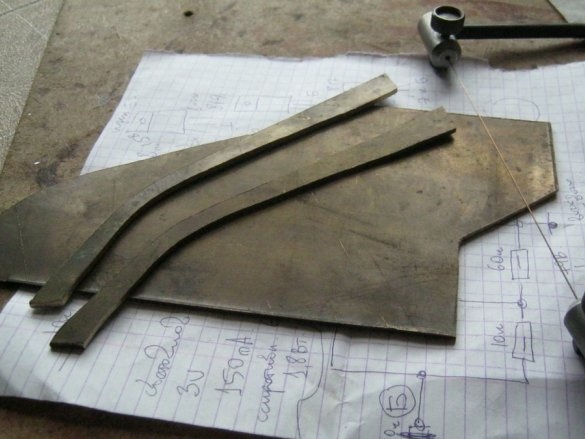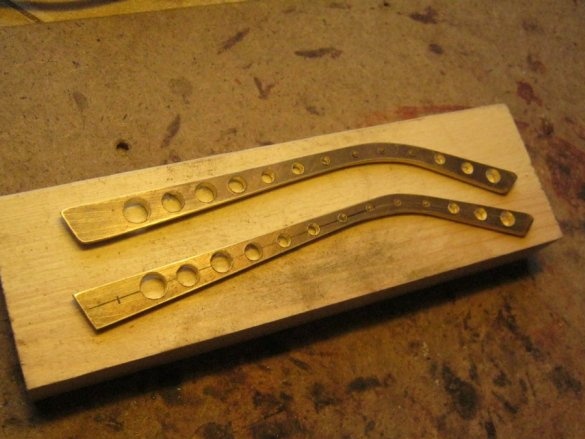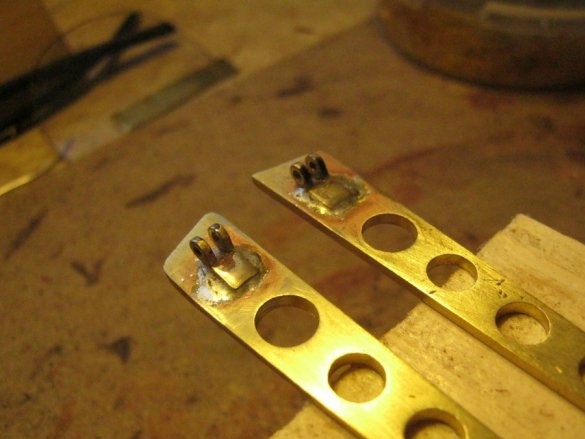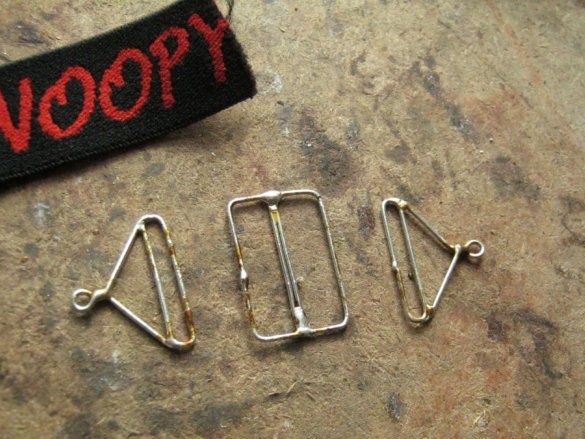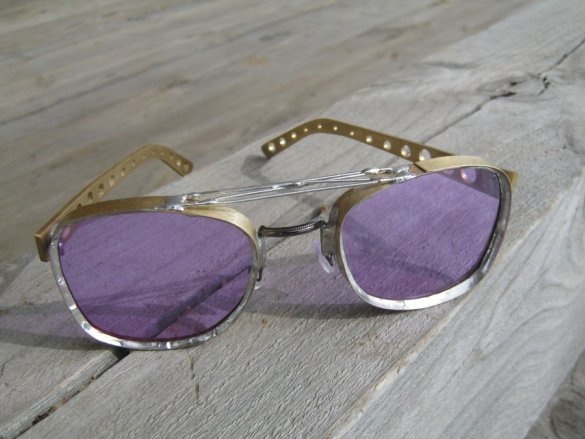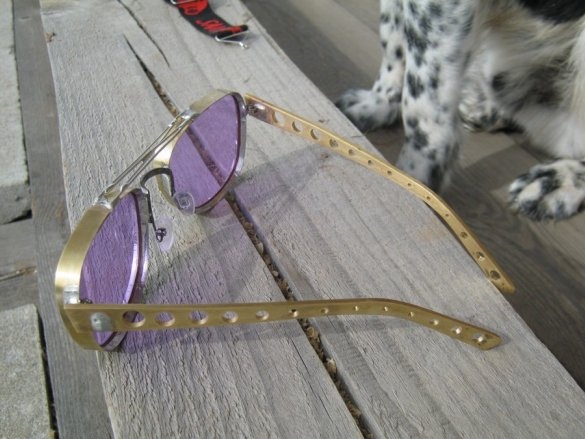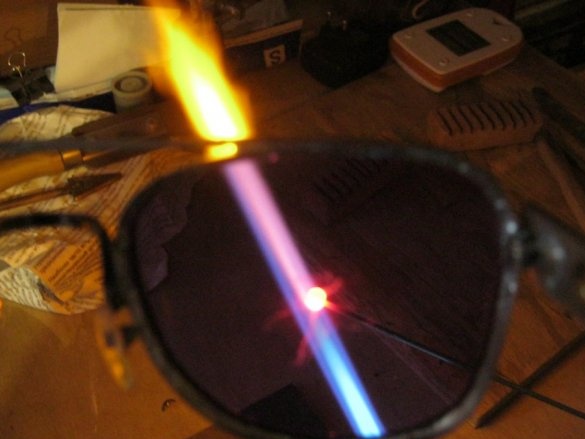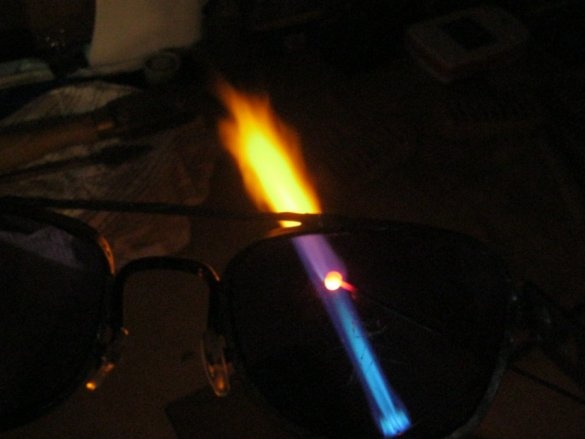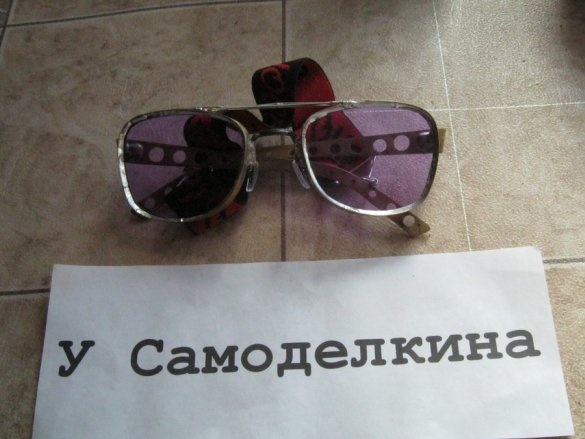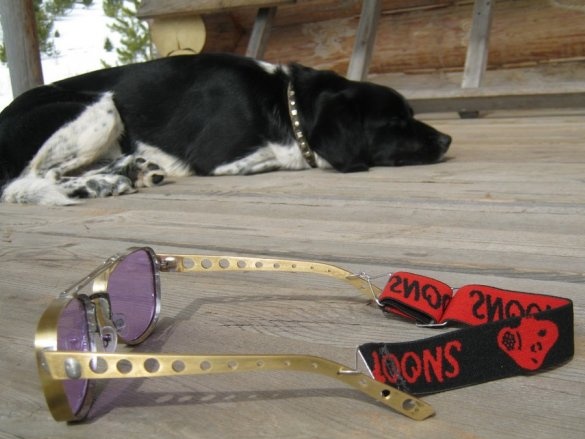Here we consider the manufacture of a reliable home-made frame for technical goggles for glassworking (lampwork). The technology can be applied as the basis for the manufacture of frames for brutal biker sunglasses or in the style of steampunk. Decorative sawing with a (jewelry) jigsaw and decorative etching. Vision correction glasses require an order of magnitude greater attention when designing and manufacturing, making frames for them yourself, you can only carefully study the theoretical part and fully understand the consequences.
Glasses with a frame described below were required for special 3 mm thick neodymium glass-light filters. These are safety glasses for glass-blowing, protecting the eyes from harmful radiation and making work much more convenient. Neodymium (Didim) glasses in general interesting thing, in this application it is important that -
The cost of ready-made glasses of this kind is quite high, so an attempt has been made to make what you can yourself. Two blanks were purchased - circles ø60 mm of neodymium glass 3 mm thick.
These glasses are significantly thicker and heavier than ordinary spectacle lenses; it is risky to insert them into cheap soft frames and expensive ones irrationally (it was easier to purchase ready-made glasses).
Special "spectacle" little things for work were taken from a penny plastic frame with Ali Express. Cheap Chinese frames, as a rule, are purely decorative - have a small size, soft fragile plastic frame and thin transparent plastic “lenses”.
When fixing the glasses, the principle used was used - the edges of the glasses are glued with copper foil (the edges of the glass are enclosed in a C-shaped profile) and are sealed.
What was used for work
Tool, equipment.
For work with glass - oil glass cutter (preferably for curved cuts, with a narrow head), glass breaker but you can get by, a grinding machine for glass, but you can get by with an abrasive block.
A 60 ... 80 W soldering iron with accessories, a set of small bench tools, a jewelry jigsaw with accessories, a drilling machine, but a screwdriver or a small drill will do.
Materials
Neodymium glass blanks, small standard details of glasses (from a plastic frame), sheet brass of different thicknesses, copper tape (foil) with an adhesive layer, thin copper wire. Lead-free soft solder (tin-copper or tin-silver alloy). A piece of textile elastic tape (fastening on the back of the head), paintwork materials (solvent), rags.
So, in order
Work with glass.
The silhouette of the frame with glasses of a suitable shape was found on the World Wide Web, scaled to the desired size, printed in kind, exemplary.
A “lens” template was copied and cut from a thin (0.5 mm) transparent PET film using a paper template. The film can be replaced with any suitable sheet material that is not wet and cut with scissors if possible - thick foil, plastic, waxed paper. For single use, you can apply a dense thin cardboard.
The template was attached to the glass blanks, so that the waste was as large as possible pieces (can come in handy) and circled with a thin marker (preferably waterproof). Unlike eyeglass lenses, where the consideration of the optical center is important, our glasses are even and you can act on the basis of savings.
Cut our lenses with a glass cutter. For more or less accurate cuts not for the ruler (curves), the most convenient is a glass cutter roller with a narrow head. Such cuts lead forward, away from you, to see the markup all the time. You can (less conveniently) make such cuts with a conventional roller glass cutter from the nearest hardware store. If the glass cutter does not provide a continuous supply of oil, it (liquid engine oil or oil-kerosene mixture) should be organized from the outside. For example, carefully, so as not to erase the markup, grease the future cut with a finger dipped in oil, drip onto the roller. In the absence of a regular skill in cutting glass, before responsible cutting, it is better to practice on trimmed fragments of window glass (it is thicker and harder). I do not recommend using glass cutters with diamond - you need a specific skill, when working with it, some additional conditions should be observed.
Glass cutter is driven along the line once, from edge to edge of glass. The pressure should be strong and uniform, the position of the glass cutter can be like that of a fountain pen, while with the finger of the second hand you can add pressure to the roller assembly. When cutting, an even characteristic sound should be heard similar to hissing.
Glass blanks when cutting should lie on a flat, not bending base, slightly elastic. For irregular work on a hard surface, you can put 3 ... 5 layers of paper, a piece of fiberboard. Fine details are not so critical to the surface.
After scratching with a glass cutter, a crack in the glass should be achieved by tapping on the back of the cut. Often at the end of the glass cutter handle is a massive metal ball for this.
The edges of the cut are very uneven with sharp edges. They will be hidden and not traumatic, however, for an even beautiful soldering, the edges of the glass should also be aligned. We have at our disposal homemade grinding machine with a diamond tool washed by water. It is designed specifically for such work.
When processing, they encountered an unpleasant moment - neodymium glass was softer than ordinary stained glass, not to mention sheet window. This discovery cost us several scratches on the “lenses” after turning them on the steel working surface of the machine, however, factory machines of this kind have a plastic desktop.
Align the edges of the glass, even if it’s not so beautiful, you can also manually, using an abrasive bar that is often wetted by water (and preferably under running water).You can try a sanding cloth on a rag basis with medium grain size. It is better to pin a piece of it with a furniture stapler to a wooden block.
After processing the edges, the glass should be thoroughly dried.
The next step is gluing the edges of the glass with copper foil. Comrade Tiffany once cut the foil with scissors and fastened it with wax, but now there is a foil of various widths with a sticky layer. In our era of pulsed power supply, cellular communications and other wi-fi, foil with a sticky layer, designed to increase EMC (electromagnetic compatibility), is widely used electronic devices and shielding sensitive circuits. There is also a special sticky copper foil for stained glass. It differs by a slightly more sticky glue, an option with a sticky layer of black color (for pasting the ends of transparent glasses in a stained glass window with a black patina at the seams) and size next to tenths of a millimeter. Well, a much higher cost.
Here, an inexpensive “electric” foil made in China is used, 6 mm wide.
The edge of the tape is freed from the protective layer and glued to the processed glass end along the entire contour, so that the edges of the foil protrude beyond the edge, if possible equally on both sides. The edge of the foil is glued to its beginning with an overlap of about a centimeter.
The protruding edges of the foil are pressed onto the glass plane with your fingers, then the folds are ironed with something harder, but not scratching the glass. Often apply something plastic more or less on the hand - the body of the pen, felt-tip pen, a disposable lighter.
Work with metal
In fact, by soldering the foil at the glass end with a thin layer of solder, we get a glass part enclosed in a metal C-shaped profile. For stained glass use this is quite enough, here, significant mechanical loads will be applied to individual sections of such a profile. To strengthen it “by bending” (and twisting), the glass is trimmed along the edge of a strip of brass tape with a thickness of about 0.4 mm.
The tape is cut out with metalwork scissors, it is tried on, its length is specified, the excess is cut off. The workpiece is cleaned with a fine sandpaper and tightly wound on a glass workpiece. Fixed outside with a thin copper wire.
Soldered with a 40 W soldering iron, solder tin-copper, with liquid (applied with a brush) stained glass flux. Soldering should be without strong local overheating - the glass may burst. It would be reasonable to warm it up slightly before soldering (with a building hair dryer).
The combination of prepared glasses into a single “optical system” is made a standard spectacle piece. Fortunately, it turned out to be nickel-plated brass and, after stripping the decorative coating, soldered well. Soft nasal pads are disconnected during operation. The strength of the structure was not high, I had to supplement it with wire stops and braces. The copper wire is from an old transformer, the lacquer insulation is peeled with a sandpaper, the wire is tinned with the same solder without lead.
The eyelets of the glasses are cut out by my favorite tool - a jewelry jigsaw, from a 2 mm thick brass sheet. To facilitate the details, a series of holes were drilled in them. At the same time, loops dug out of a plastic factory frame are soldered into the holes in the part adjacent to the glasses, and an elastic band will be attached to the nape of the bespectacled glass in the holes at the ends of the arches.
The elastic tape was picked up in black and with the inscription "Snoopy". This is the name of the funny drawn dog from the comics, by the way, often with glasses. Authentic happened.
For fastening and regulating the length of the tape, several parts are soldered from the same tinned wire.
Assembly, testing
The glasses were washed with solvent from flux residues and collected. Trying showed that glasses do not fit without a tape, but a sharp nod down can reset them.Attaching the tape at once solved the problem, in addition, the weight of the rather heavy (especially in the front part - solder, iron, thick glass) glasses is distributed much more successfully, they do not interfere even with prolonged wear.
The work of neodymium glasses is illustrated by several photos below. A small piece of glass on a steel spoke is heated in flame on gasoline vapor. You can see a bright "soda" glow that interferes with the observation of the glass and is a source of harmful radiation.
Neodymium glass almost completely cuts out the orange glow of sodium and allows you to observe the glass heated in the flame. It is very convenient when working.
Babay Mazay, March 2019



